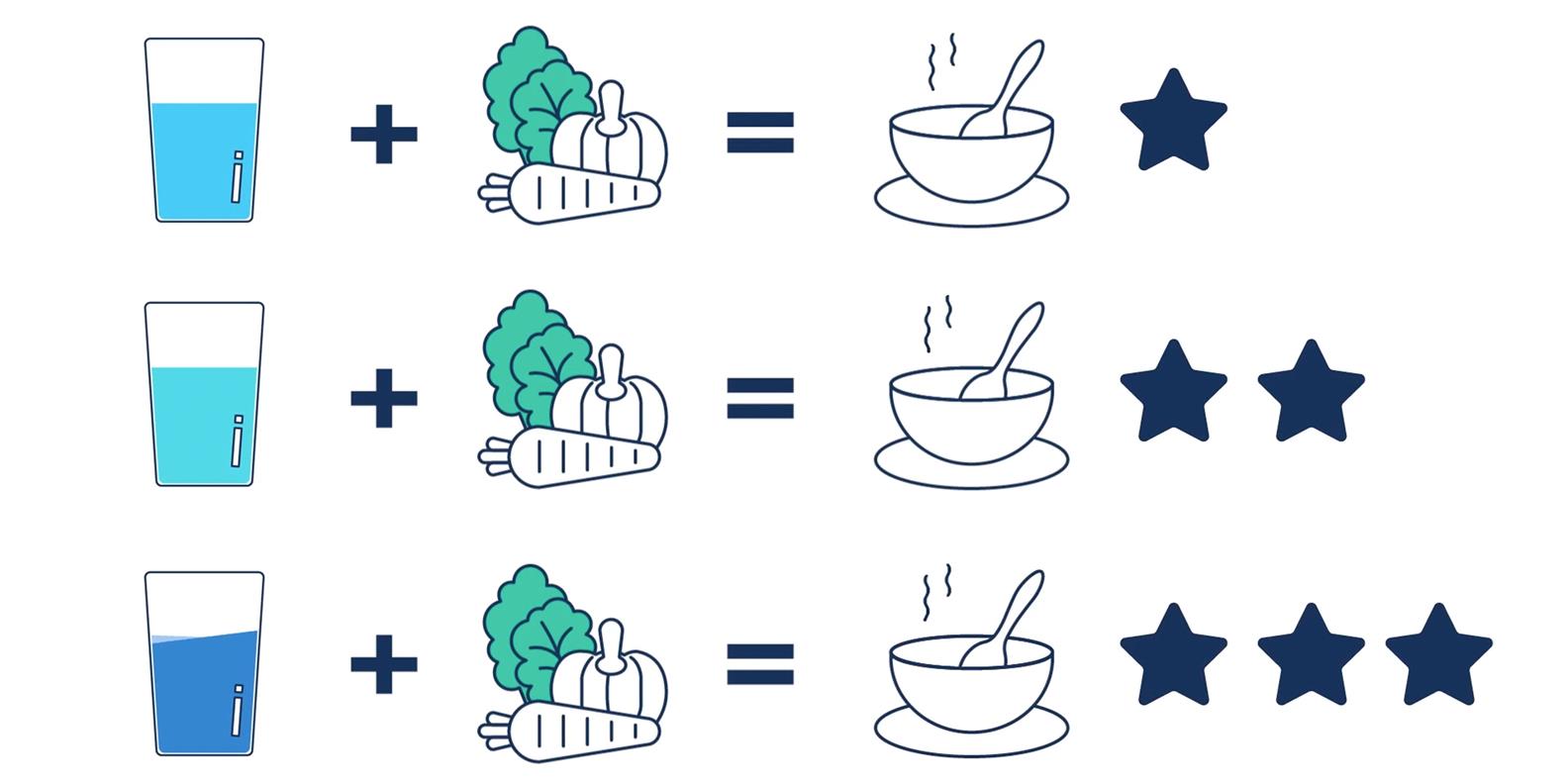Did You Know?
Tap To Table – The Taste Of Water
Whether drinking pure water, pairing it with food or using it to cook - water isn’t just water. Depending on its origin and composition, it can alter the overall experience of taste.
Whoever decides to go to a restaurant for fine dining, has probably faced the question of what wine to pair with their food. Whether one orders steak, fish or mushroom risotto, depending on the dish, an educated waiter will usually recommend a different beverage to go with it. For a good reason, because when making the right choice, pairing wine with food can create a totally new and superior gastronomic experience.
However, new trends have emerged. It turns out, there are several alternatives for pairing food with wine.
-
Juices as alternative for wine
Some of the world’s top restaurants, like Noma in Copenhagen, now rely on pairing food with juices. By ordering an eight-course meal, by the end of the evening, the guest will have drunk nearly one liter of juice. -
Tea as alternative for wine
Another alternative trend is pairing food with tea. Nicole Klauss, expert and advocate for so-called “temperance pairings” relies on this hot beverage to add flavor and nuance to a meal. For example, ginger or green teas can provide an ideal contrast to wasabi in a sushi meal.
And... what about water?
Could it have the same effect? What if there were different waters to drink with different meals?
For Alician Akdemir, one of the first water sommeliers in Turkey, water is the new wine. The secret of it lies in the different mineral contents, which each highlight the subtle differences of the course and adds to the experience of taste.
But not just that. Besides the flavor, water also has a deep impact on the texture of a dish, dissolvability and digestibility. Think of carbonated water, for example. It produces a buoyant, zesty feeling in the mouth and may feel refreshing. But careful! When combined with a spicy dish, carbonated water spreads the sensation of pain rather than dissolves it, making it an incorrect pairing.
Another example is espresso. When brewed with soft mountain water, it can taste even smoother, brighter and sweeter.
Why? The explanation can be summed up in two words: limescale residue. As a matter of fact, mountain water contains less chalk residue than ground water from lower altitudes. The limescale affects both the coffee flavor and the ability to saturate coffee grounds. That’s why it is no coincidence that Vienna is known for its coffee culture: The city gets its water directly from the Alps.
So it looks like water has the same effect as wine, and is still healthier than juice.
It also looks as if the old saying “there’s just something in the water” has more to it than one would initially think...
But where does the water get its taste from?

On each water bottle there is an indication of ppm: parts per million. This term describes how much of a certain mineral is in that bottle. Because yes – not all H2O is equal.
Depending on its origin, the composition of water varies. Water near the beach often has a slight scent of sulfur, while rivers and lakes can create an earthy, organic taste. New Yorkers swear, that it is their reservoir water, piped from distant mountains, that makes their pizza and bagels taste so good.
Now, there are numerous other naturally occurring minerals in water, but the ones affecting our taste perception the most are:
- HCO₃⁻ (bicarbonate)
- SO₄²⁻ (sulfate)
- Ca²⁺ (calcium)
- Mg²⁺ (magnesium)
While calcium makes water taste milky and smooth, sodium makes it taste rather salty. Still, each individual’s personal history, including their societal norms and habits, has an influence on the taste experience as well.
So, taste is subjective and objective at the same time. In fact, humans have spent a long time analyzing how the senses work in general.
The sense of taste is usually broken down into these five basic categories:
- Sweet
- Sour
- Salty
- Bitter
- Savory
And don’t forget: Each taste has its evolutionary reason. The bodily reactions, when tasting different flavors, once showed humans what to eat and what better to avoid. For example, bitterness can be interpreted as warning, since many bitter compounds are poisonous. Similarly, sour and astringent tastes can be a sign for unripe fruit, which also is better left uneaten.

The key takeaway and how can GROHE contribute?
To achieve the best possible taste, an important factor when preparing a meal is to control the quality of the water and its components. The different origins and minerals in water can determine the whole gustatory experience. Although we generally have subjective interpretations of taste, the role of water as key ingredient for meals, pairings and pure drinking shouldn’t be underestimated.
Knowing all of the above, the experts Klauss and Akdemir have both chosen to work with GROHE Blue. The water system is not just helpful for an optimization of the taste experience, because it filters out limescale and softens the water. Also, the convenience of being able to get chilled still, medium or carbonated water straight from the kitchen tap, has made a huge difference for the experts.




